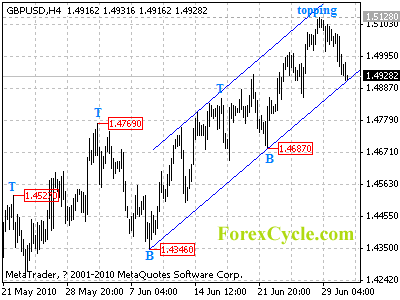Market Analysis by Finexo.com
Uncertainty flooded the markets yesterday, as concerns escalated over the global economic recovery following a disappointing release in U.S. consumer confidence, a downward revision to China’s leading indicator index and an unanticipated rise in the Japanese unemployment rate.
Adding to market jitters is the Thursday’s upcoming deadline for the European Banks to repay 442 billion Euros to the ECB. On Thursday, time runs out for the ECB financing program which investors fear could result in a potential liquidity shortfall of over 100 billion Euros in the financial system. Banks across the Euro Zone, Spain in particular, have been finding it extremely difficult to obtain liquid funding in the commercial markets, especially with inter-bank funding practically non-existent. Spanish banks have been petitioning the ECB to take action to ease the systemic fallout from the expiry of funding program.
EUR/USD
The Euro edged up against the Dollar this morning, after a report showed that Americans were becoming increasingly distressed over the outlook of for their jobs and income. The EUR/USD touched on $1.2223 as the market reacted to yesterday’s unexpected drop the in CB confidence index.
Yesterday, the Euro hit a 2-week low against the Dollar, as market concerns escalated over Thursday’s expiration of a European Central Bank refinancing program. The Euro touched on $1.2135, its lowest level since June 14th.
GBP/USD
The Pound has been a big winner this week, as it continues to appreciate against the Dollar. However waning risk appetite may affect the GBP/USD should the pair fall below the $1.50 level. UK Gilts have been sold off as a result of comments that the recent rise in inflation may force the Bank of England to tighten its monetary policy earlier than it had originally intended; however this remains a minority view on the MPC, and the generally sentiments are towards a medium-term drop in inflation. According to some analysts, this morning’s unexpected fall in the UK housing price index could indicate that the UK housing market is headed for another dip – an event that would weigh heavily on the British currency.
USD/CAD
The Canadian Dollar touched on its lowest level in three weeks as concerns escalated over the European debt crisis and signs of a global economic slowdown pushed traders out of higher- yielding assets such as stocks and commodities. The Loonie slipped 2.1% to C$1.0575 per U.S Dollar yesterday, its lowest level since June 8th. Later today, Stats Canada is set to release the nation’s GDP for the month of April. Canada’s GDP grew by 0.6% in March and by 6.1% in the 1st quarter of this year. This time around, the market expects the growth to continue with a 0.2% expansion.
Forex Market Review & Analysis by Finexo.com
Disclaimer: Trading the foreign exchange (Forex) carries a high level of risk, and may not be suitable for all investors. All information and opinions contained on this website are to be used for general informational purposes only and do not consitute investment advice.

 trading session. The dollar currently trades close to unchanged against the Japanese yen.
trading session. The dollar currently trades close to unchanged against the Japanese yen.


